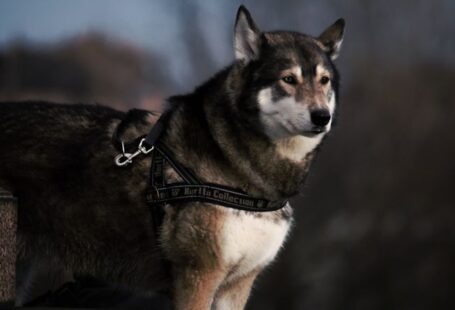Dogs are known for their loyalty, companionship, and protective instincts. However, at times their territorial behaviors can present challenges for pet owners. Understanding these behaviors and knowing how to effectively manage them is crucial for a harmonious relationship between dogs and their human companions.
The Nature of Territorial Behaviors
Territorial behaviors in dogs stem from their natural instincts to protect their living space and resources. Dogs are descendants of wolves, who are known to mark and defend their territory. As pack animals, dogs exhibit similar behaviors to establish boundaries and assert their dominance within their environment.
Signs of Territorial Behaviors
Recognizing the signs of territorial behaviors in dogs is the first step towards managing them effectively. Common signs include excessive barking or growling at strangers approaching their territory, aggressive behavior towards other animals or people encroaching on their space, and marking their territory with urine or feces. Additionally, dogs may exhibit body language such as raised hackles, stiff posture, and intense staring when feeling threatened or protective of their territory.
Understanding Triggers
Identifying the triggers that provoke territorial behaviors in dogs is essential for addressing the root cause of their reactions. Triggers can vary from unfamiliar visitors, perceived threats to their territory, other animals entering their space, or even changes in their environment that disrupt their sense of security. By understanding what sets off these behaviors, pet owners can take proactive measures to prevent or manage them effectively.
Effective Management Strategies
Managing territorial behaviors in dogs requires a combination of training, consistency, and positive reinforcement. Here are some effective strategies to help address and mitigate territorial behaviors in your canine companion:
Establish Clear Boundaries: Define and communicate boundaries within your home or property to help your dog understand their territory. Use physical barriers, such as gates or fences, to demarcate their space and limit access to certain areas.
Socialization and Training: Proper socialization and obedience training are crucial for teaching dogs appropriate behavior and how to interact with others in different situations. Expose your dog to various environments, people, and animals to help them feel more comfortable and less threatened by new stimuli.
Positive Reinforcement: Reward good behavior with treats, praise, or playtime to reinforce positive interactions and discourage territorial displays. Redirect negative behaviors towards more acceptable alternatives, such as sitting or staying calm when guests arrive.
Consistency and Routine: Establish a consistent routine for your dog to create a sense of stability and predictability in their environment. Dogs thrive on routine and structure, which can help reduce their anxiety and insecurity about their territory.
Seek Professional Help: If your dog’s territorial behaviors are severe or persistent, consider seeking guidance from a professional dog trainer or behaviorist. They can provide tailored strategies and techniques to address specific issues and help modify your dog’s behavior effectively.
Creating a Safe Environment
Creating a safe and secure environment for your dog is essential for managing their territorial behaviors. Provide your dog with a comfortable and designated space within your home where they can retreat and feel safe. Ensure they have access to food, water, toys, and a comfortable resting area to alleviate stress and anxiety.
Renaming and Final Thoughts
Embracing your dog’s natural instincts while also setting clear boundaries and expectations is key to managing territorial behaviors effectively. By understanding the triggers, implementing training and positive reinforcement, and creating a safe environment, pet owners can foster a harmonious relationship with their canine companions. Remember, patience, consistency, and a proactive approach are essential for addressing and mitigating territorial behaviors in dogs. By working together with your dog and seeking professional guidance when needed, you can help your furry friend feel secure, confident, and well-balanced in their territory.





